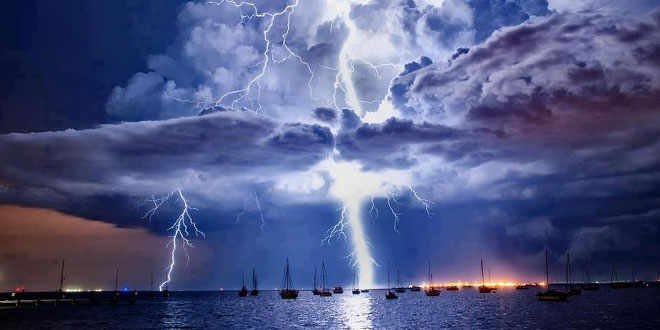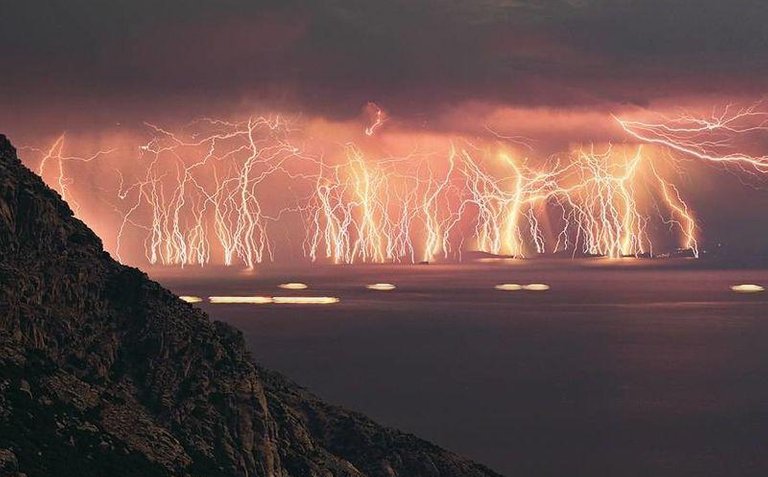The Catatumbo lightning is a meteorological phenomenon that occurs in the Maracaibo lake basin in Venezuela, mainly in the southern part of the lake and in the lower basin of the Catatumbo river, where its name comes from. It is one of the 5 best known natural phenomena worldwide.


This phenomenon is characterized by the appearance of a series of lightning bolts almost continuously and practically silently due to the great distances needed to observe the phenomenon, which occurs in clouds of great vertical development forming electric shocks between 1 and almost 4 kilometers high, as the winds associated with the Low Level Night Jet of the Maracaibo Lake Basin penetrate the surface of the lake in the afternoon (when the evaporation is greater) and are forced to ascend by the mountainous system from Perijá (3,750 meters above sea level) and the Cordillera de Mérida, the Venezuelan branch of the Andes (up to 5,000 meters above sea level).
The origin of this phenomenon is in the orographic effect of these mountain ranges that enclose and stop the northeast winds; thus, clouds of great vertical development are produced, concentrated mainly in the Catatumbo river basin. This phenomenon is very easy to see from hundreds of kilometers away, such as from Cúcuta, in Colombia, or from the lake itself (where clouds do not usually occur at night). [Citation needed] Therefore, it is also known as the Lighthouse from Maracaibo, since the boats that furrowed the area could sail overnight without problems during the time of sailing. It can occur up to 260 times a year and lasts up to 10 hours per night; In addition, this phenomenon can reach 60 downloads per minute.
Although it is true that thunderstorms produce a high amount of ozone, and Catatumbo registers the highest density of electric discharges in the world, with more than 200 / km² / year, it is very unlikely that this ozone reaches the stratosphere and regenerates the ozone layer.